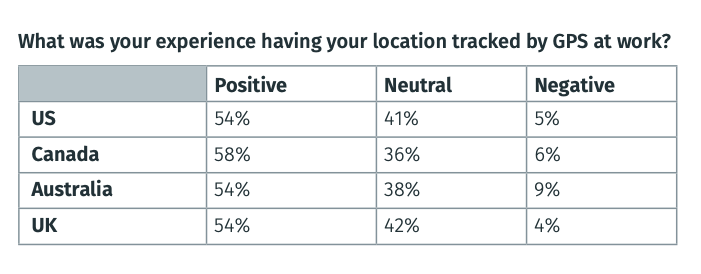Worker Management: Say No to Micromanaging and Yes to Technology

To 4 in 10 U.S. small business owners, becoming their own boss has always been their dream. And while the journey is far from easy or glamorous, they say it’s rewarding and well worth the risk.
There is, perhaps, no stronger indication of success than when a business is ready to hire. While more help may seem like a no-brainer for businesses looking to scale, it can be hard for entrepreneurs to loosen the reins and share the burden. After all, they’ve done everything themselves up to that point. In fact, many small business owners liken running their business to raising a child, which would explain those helicopter-parenting their business.
Micromanagement: The distrusting boss who stifles real work
To micromanage is to manage with “excessive control or attention to details.” Employees consistently point to bad bosses as the primary reason for leaving a job, citing micromanagement as the straw that broke the camel’s back. Wondering how you stack up? Here’s a quick gut check for people managers.
You might be micromanaging if you are:
- The only one who can approve anything.
- Involved in every decision-making process.
- The only one who talks during meetings.
- Doing work assigned to others, sometimes without their knowledge.
- Always redoing what others have done, even low-priority tasks.
3 Helpful tips to keep the micromanager at bay
Most employees recognize that micromanagers just want the job done well. But in its wake is broken trust that’s often irreparable. That, however, is not to say there’s no hope for improvement. Here are three ways to optimize management the next time you feel that micromanagement itch.
1. Use the right tools
Sometimes, micromanagement is the result of one without the right tool to solve a simple problem. Visibility is good for both employers and employees, as is transparency. This is where technology does its best work.
Automated GPS time tracking
Some may be quick to assume that tracking employee locations when they’re clocked in is the digital reincarnate of a micromanager. But a global GPS time tracking study shows that 1 in 3 employees in the U.S., U.K., Australia, and Canada has used GPS tracking at work, signaling that digital connectivity with employees may increasingly be the norm. Surprisingly, only 6% of employees across four countries described the experience as negative. In the right hands, the technology may increase trust between employees and employers.
Collaborative apps
Improved visibility shouldn’t be one-sided and reserved only for the manager or employer. Collaborative task- and project-oriented apps like Asana, Trello, or AirTable let team members have permission-based insights. Not every cook has to be in the kitchen at the same time.
Similarly, instant messaging platforms, like Slack and Skype, integrate with Google Drive and Outlook, respectively, to encourage and improve cross-functional cooperation. They also grant users the ability to have private, public, or group conversations.
2. Manage and measure outcomes, not tasks
Tell your team what the end goal is and why it matters, but leave the “how” to them. An example outcome can be: Increase revenue by 10% in the new fiscal year. In order to achieve this, one of the tasks is to introduce at least one new product or service in the lineup. The outcome is the constant that doesn’t change, while the tasks are the means to help achieve the end result.
Sure, share what you know has worked in the past. Just keep in mind that it may not be for everyone. Someone may even come up with a better way to do it. Managing the outcomes and leaving the “how” to the employees also empowers them to take charge, perhaps surprising you and themselves of what’s possible.
3. Ask about managing styles and incentivization
Katie Douthwaite Wolf is the staff writer and editor for The Muse. She recalls a previous job where her boss would reward her with a lot of food. While free snacks work great for many reasons, it really wasn’t Katie’s jam, so she really didn’t feel impressed or rewarded, despite good intentions.
If you’re a people manager, you’d be surprised at how transparent your employees can be when asked about how they want to be managed and how they can do their best work. Don’t know where to start? Here’s a list of possible perks to get your ideas flowing. Don’t know what to ask? Consider posing these questions to your team during your next round of 1:1s.
How do you best receive feedback?
Some prefer verbal feedback in person. Others like it in writing for anytime reference.
How do you want to be rewarded or recognized?
Calling out an introvert in a packed meeting room to shower them with praise may do more harm than good.
What is your preferred non-monetary reward?
A bonus is nice, but some employees actually prefer a flexible working schedule and more time off.
With technology and the right mindset, business owners and managers can get the control and visibility they seek. But they can get it transparently and objectively. It’s not about letting technology run your business blindly. Leverage the technology business owners and employees have benefitted from so everybody wins.
Author: Prior to becoming a copywriter for TSheets by QuickBooks, a time tracking and scheduling solution for small businesses, Dottie Chong spent 15 years in marketing communications and content management, focused on driving engagement and brand affinity.
3222 Views













